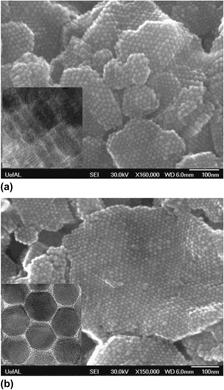Crossref Citations
This article has been cited by the following publications. This list is generated based on data provided by
Crossref.
Ahmad, I.
Zandvliet, H. J. W.
and
Kooij, E. S.
2014.
Shape-Induced Separation of Nanospheres and Aligned Nanorods.
Langmuir,
Vol. 30,
Issue. 27,
p.
7953.
Khudiyev, Tural
Tobail, Osama
and
Bayindir, Mehmet
2014.
Tailoring self-organized nanostructured morphologies in kilometer-long polymer fiber.
Scientific Reports,
Vol. 4,
Issue. 1,
Palchoudhury, Soubantika
Zhou, Ziyou
Ramasamy, Karthik
Okirie, Franklin
Prevelige, Peter E.
and
Gupta, Arunava
2017.
Self-assembly of P22 protein cages with polyamidoamine dendrimer and inorganic nanoparticles.
Journal of Materials Research,
Vol. 32,
Issue. 2,
p.
465.
Vysotskii, V. V.
Dement’eva, O. V.
Salavatov, N. A.
Zaitseva, A. V.
Kartseva, M. E.
Sapkov, I. V.
and
Rudoy, V. M.
2018.
Structure and Electrical Conductivity of Ring Deposits Resulting from Evaporation of Droplets of Dispersions Containing Gold Nanoparticles with Different Degrees of Anisotropy.
Colloid Journal,
Vol. 80,
Issue. 6,
p.
615.
Rafael Bordin, José
2019.
Distinct self-assembly aggregation patters of nanorods with decorated ends: A simple model study.
Fluid Phase Equilibria,
Vol. 499,
Issue. ,
p.
112251.
Zampiva, Rúbia Young Sun
Venturini, Janio
Acauan, Luiz Henrique
Kaufmann, Claudir Gabriel
dos Santos, Leonardo Moreira
Alves, Annelise Kopp
Bergmann, Carlos Pérez
and
ten Caten, Carla Schwengber
2019.
The impact of the reaction atmosphere on the additive-free growth of Mg2B2O5 nanorods.
Ceramics International,
Vol. 45,
Issue. 5,
p.
6228.
Kim, Whi Dong
Kim, Dahin
Yoon, Da-Eun
Lee, Hyeonjun
Lim, Jaehoon
Bae, Wan Ki
and
Lee, Doh C.
2019.
Pushing the Efficiency Envelope for Semiconductor Nanocrystal-Based Electroluminescence Devices Using Anisotropic Nanocrystals.
Chemistry of Materials,
Vol. 31,
Issue. 9,
p.
3066.
Ratnaweera, Rivi J.
Rodríguez Ortiz, Freddy A.
Gripp, Nicholas J.
and
Sheldon, Matthew T.
2022.
Quantifying Order during Field-Driven Alignment of Colloidal Semiconductor Nanorods.
ACS Nano,
Vol. 16,
Issue. 3,
p.
3834.
Farid, Sumbal
Mao, Qing
Ren, Suzhen
Hao, Ce
and
Dong, Xufeng
2022.
Promoting the Oxygen Evolution Reaction via Morphological Manipulation of a Lamellar Nanorod-Assembled Ni(II)-Pyrazolate Superstructure.
ACS Applied Materials & Interfaces,
Vol. 14,
Issue. 42,
p.
47775.
Chapagain, Puskar
and
Neupane, Suman
2023.
Optoelectronics - Recent Advances.
Moon, Jaeyoon
Jeon, Haejin
and
Kim, Dahin
2024.
Colloidal Semiconductor Cadmium Chalcogenide Nanorods and Nanoplatelets: Growth, Optical Anisotropy and Directed Assembly.
Korean Journal of Chemical Engineering,
Vol. 41,
Issue. 13,
p.
3413.
Arora, Deepshikha
Tan, Sze Yu
Tong, Shi Wun
Lim, Poh Chong
Suseela Nair, Parvathi Nair
Lin, Ming
Zhu, Qiang
Yan, Qingyu
and
Wu, Wen-Ya
2024.
Engineering Heterostructured Semiconductor Nanorod Assemblies via Controlled Cation Exchange: Implications for Efficient Optoelectronics.
ACS Applied Nano Materials,
Vol. 7,
Issue. 16,
p.
18189.
Campos, Miguel T.
Pires, Laura S.
Magalhães, Fernão D.
Oliveira, Maria J.
and
Pinto, Artur M.
2025.
Self-assembled inorganic nanomaterials for biomedical applications.
Nanoscale,
Vol. 17,
Issue. 10,
p.
5526.
